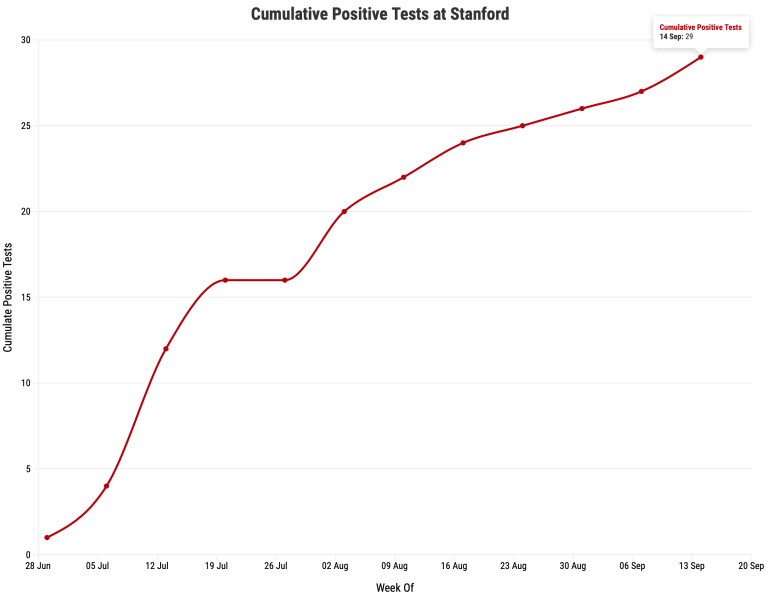This piece was last updated on Oct 6 7:00 pm PT. For more recent tracking of COVID at Stanford, please visit this article.
The data for this article can be found on the Stanford Open Data Portal.
With reports of COVID-19 cases spiking for dozens of institutions as students return to campus, all eyes have been on Stanford’s numbers as students trickled back to campus for the start of fall quarter and essential research functions restarted.
According to Stanford Health Alerts FAQ, Stanford has adopted a “surveillance” testing approach such that undergraduate, graduate and professional students living on campus or living off campus but coming to campus regularly are tested weekly. Beyond the testing system, Stanford has outlined Campus Compacts for undergraduate and graduate students, defining rules that students must adhere to while on campus. The University updated its policy with an “appeals process” after significant undergrad and grad student pushback.
The Daily is tracking the number of cases reported among Stanford affiliates and the number of cases confirmed through Stanford’s screening program using the University’s dashboard.
Throughout the spring and summer, Stanford reported cumulative positive COVID-19 tests in its affiliates. These data consisted of self-reported cases from faculty, staff, students or postdoctoral scholars regardless of location or testing provider.
As seen on the graph above, between May and June, reported cases remained fairly steady between 50 and 60. During the summer months, there was a steady rise in reported cases.
With the start of fall quarter, Stanford redesigned its COVID-19 updates page to solely focus on tests conducted through the University’s screening program. The student data are for those living on campus or in nearby areas. Scroll through the graphs above to see the results of Stanford’s surveillance program.
Stanford has also rapidly increased the number of tests it is administering, but case counts have remained low. Since the end of June, there have never been more than ten weekly positive tests. According to the dashboard, over the past three weeks, there have been six positive cases out of the more than 14,000 tests administered to students, and one positive result out of the more than 3,000 tests administered to faculty, staff and postdocs. Since the end of June, Stanford has conducted nearly 34,000 tests. There have been 36 positive cases, yielding a positivity rate of 0.12%.
Stanford has emphasized that testing is not an alternative for prevention measures, which include social distancing, mask-wearing, hand washing and self-reporting health status. We will continue to update this piece with newly reported cases.
Contact Sophie Andrews at sophie1 ‘at’ stanford.edu, Michelle Bao at baom ‘at’ stanford.edu, Nicole Corso at ncorso ‘at’ stanford.edu and the Stanford Daily Data Team at data ‘at’ stanforddaily.com.
